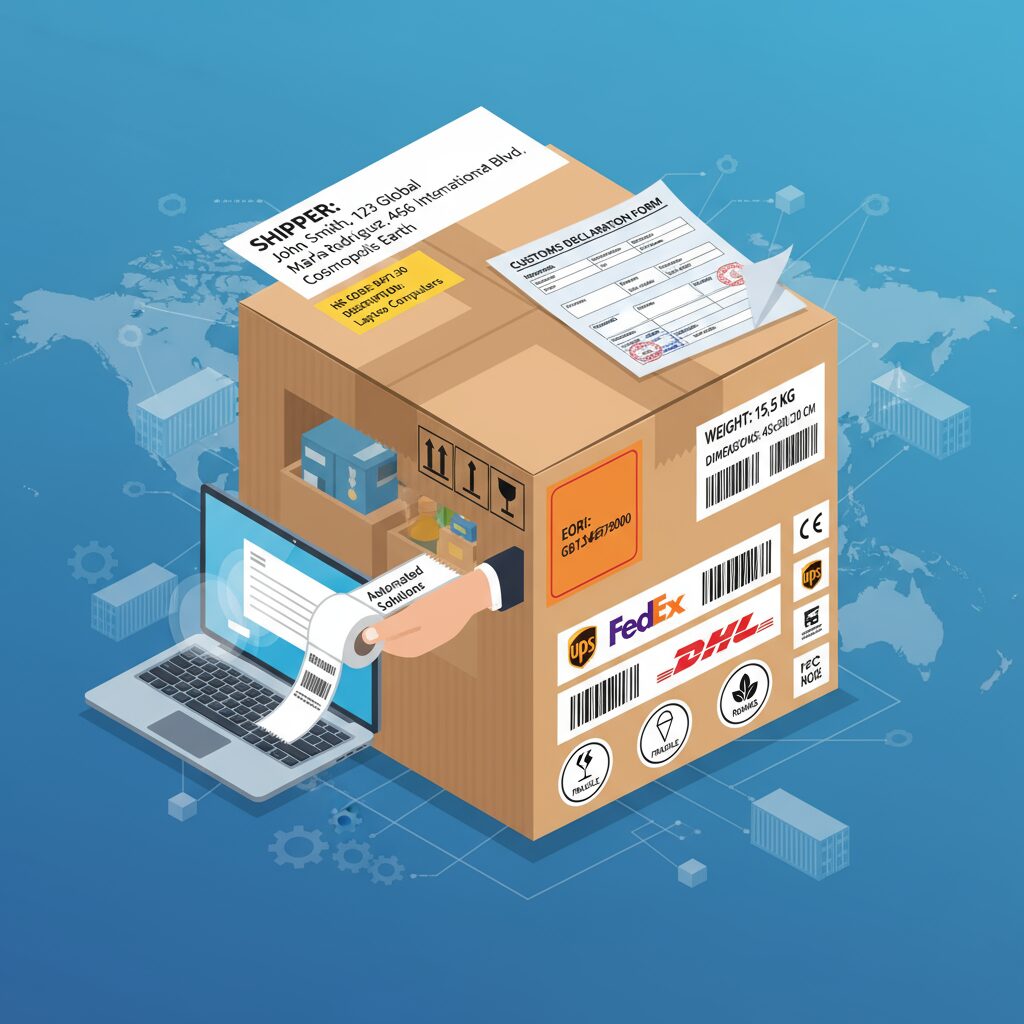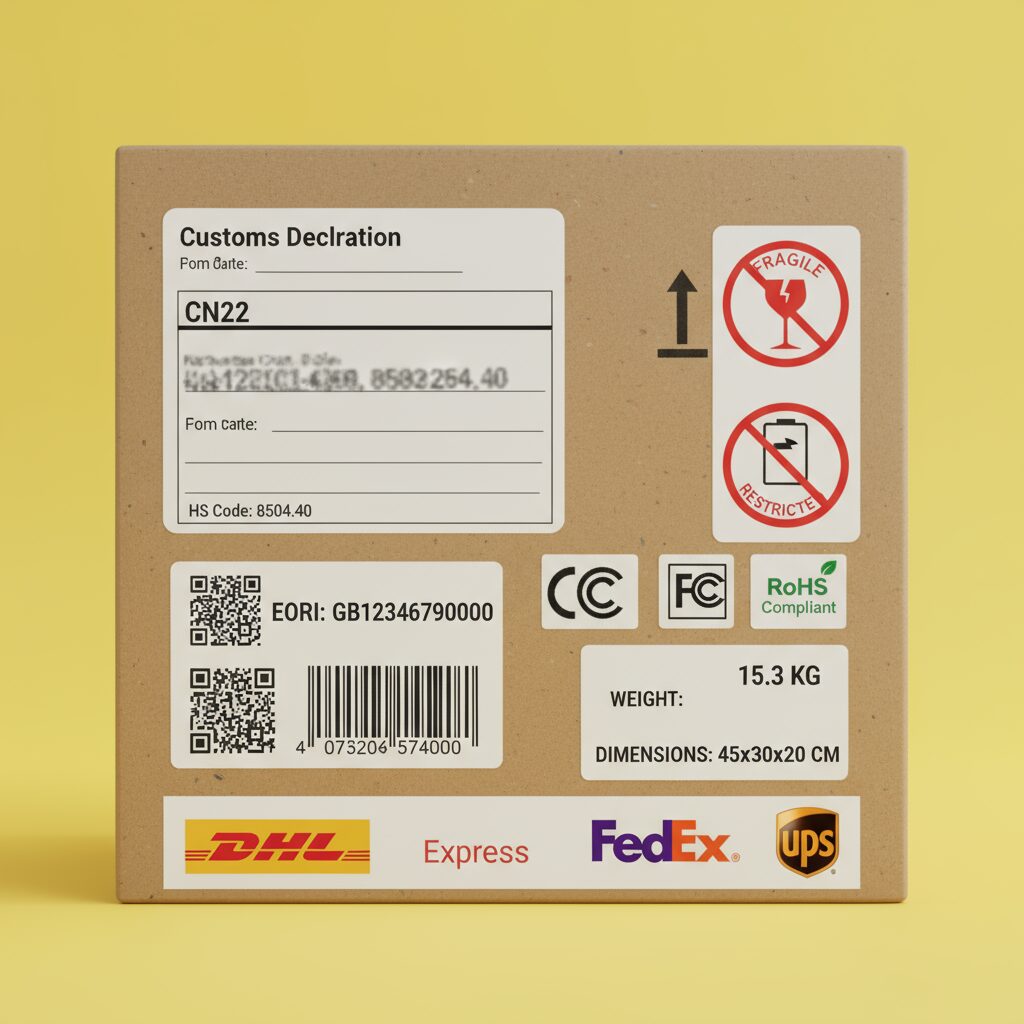Many of the items that you ship overseas are a little different from regular packaging. They involve different compliance essentials and various documentation that will make it easier for you to get the item to the customer.
Obviously you have the name and address. You need that to get it anywhere. Another one that you’re going to want to have as well is HS codes, or harmonized system codes which classify goods. These will show the country of origin, where it’s going, the receipt and shipping information, and all other declarations for customs that are needed.
When shipping to where the EU is, you may want to include the EORI number, known as the economic operators resignation and identification, along with the certification marks that are there.
This is of course, on top of the barcodes for the items that contain information that’s crucial, the type of service that the packaging might need, such as express or ground, dimensional weight for correct handling and pricing, and special instructions for handling, such as if an item is perishable or fragile, on top of the regular customs declaration for those international shipments you’ve got.
Different Shippers
You want to make sure that you choose the right shippers as well.
UPS and USPS are used in the US for example. UPS tends to handle bigger, more fragile and expensive shipments, while USPS handles just about everything else. FedEx is used for specialty and other major shipments.
Many international companies might also use DHL and other carriers. Some might start with a carrier from their country of origin, and then get into the US or destination country.
Some shippers also use different types of codes. UPS for example has more specific diet label dimensions and a very particular type of format for the barcodes, while FedEx might use another type of code requirement. Many times, having the label printing software configured for different carriers and generating the correct label based on a specified shipping method plays a major role.
Handling Fragile and Restricted Goods
Many times, you also need to focus on trying to have the right protection in place when shipping.

Letting the courier know that something is fragile is a good place to start, but accurate labeling also plays a major part.
A bigger issue is usually restricted goods. Certain items can’t come into the country without the right documentation, and if you don’t have that, it’s going to mean major delays and frustrations for both you and customers. Making sure that, should you choose to ship out such items, you have the right documentation in place, will help with the delays and reduce the lead times for such things. it’s important to consider, as the correct labeling and documentation is necessary, not just for local shipping, but on an international level.
When in Doubt, Use Automated Solutions

If you’re not sure whether your item needs specific labels, there’s now automated solutions that will help you with generating the correct compliant labels that will ensure the proper documentation for these items.
Many shipping platforms help with this, and the right compliant labels will make it so that you’re able to improve your experience, and thereby strengthen your company’s shipping practices.
Overall, if you’re using labeling and documentation to help with making sure that the items remain compliant, you’ll be able to not only get international shipments out the door, but also improve the overall speed of your packaging, from the beginning of the process, all the way to the customer’s door, no matter where it may be.
